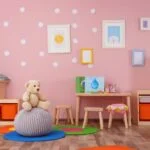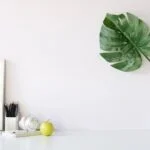With the latest iOS 14 update, Apple users are now able to personalize and decorate their home screens like never before. From customizable widgets to creative app icon designs, the new customization features have sparked excitement among iPhone enthusiasts looking to give their devices a fresh and unique look.
In this article, we will delve into the step-by-step process of how to decorate your home screen with iOS 14, exploring different elements such as wallpapers, app organization, widgets, and more.
One of the most anticipated aspects of iOS 14 is the ability to truly make your home screen reflect your personal style and preferences. With endless possibilities for customization, users can now tailor their iPhones to suit their aesthetic tastes and organizational needs. Whether you prefer a minimalist design or a bold and vibrant look, iOS 14 allows you to transform your device into a personalized masterpiece that stands out from the crowd.
As we navigate through the exciting world of iOS 14 customization, we will guide you through updating your device to iOS 14, understanding the basics of how the new features work. From choosing the perfect wallpaper that complements your style to organizing apps in a visually appealing layout, this article will provide you with tips and tricks on creating a home screen that not only looks stunning but also enhances your user experience.
So let’s dive in and learn how to elevate your iPhone’s aesthetics with iOS 14.
Setting the Stage
With the release of iOS 14, Apple has introduced a range of new customization features that have excited iPhone users around the world. To kickstart the process of decorating your home screen with iOS 14, the first step is to ensure your device is running on the latest operating system. Updating to iOS 14 provides access to a plethora of options to personalize your home screen like never before.
To update to iOS 14, go to your iPhone’s settings, click on “General,” and then select “Software Update.” If an update is available, simply follow the on-screen instructions to download and install it. Once you have successfully updated to iOS 14, it’s time to dive into the new customization features and understand how they work.
One of the most exciting features of iOS 14 is the ability to add widgets to your home screen. Widgets are dynamic blocks that display useful information from your apps at a glance. You can add widgets by pressing and holding on the home screen until the apps jiggle, then tapping on the “+” icon at the top left corner.
From there, you can select which widget you want to add and customize its size and position on your home screen. Mastering how to decorate your home screen with iOS 14 widgets opens up a world of possibilities for a personalized user experience.
| Data | Data |
|---|---|
| iOS 14 Update Process | Accessed through iPhone settings > General > Software Update; |
| iOS Features exploration | Adding widgets through holding & tapping “+” sign; |
Choosing the Perfect Wallpaper
When it comes to customizing your iOS 14 home screen, choosing the perfect wallpaper is a crucial step in creating a cohesive and visually appealing look. The wallpaper sets the tone for the overall aesthetic of your home screen, so it’s important to pick one that resonates with your personal style and preferences. One popular trend among iOS 14 users is to select wallpapers that complement their chosen app icons and widget designs.
To start, consider themes or color schemes that you are drawn to. Whether you prefer minimalist designs, vibrant colors, nature landscapes, or abstract patterns, there are countless options available to suit your taste. You can also opt for dynamic wallpapers that change throughout the day or based on your device’s light or dark mode settings for added visual interest.
Another factor to keep in mind when selecting a wallpaper is how it will interact with your chosen widgets and app icons. Make sure the wallpaper doesn’t clash with these elements and instead enhances them to create a harmonious layout. Experiment with different wallpapers until you find one that complements your overall design aesthetic and ties everything together seamlessly.
In addition to static wallpapers, you can also consider using live wallpapers or creating custom designs using apps like Canva or Pinterest. These options allow for more personalized and unique wallpaper choices that truly reflect your style. Remember, the goal is to create a home screen that not only looks great but also feels like an extension of your personality and creative expression.
Organizing Apps
- Group Similar Apps: One of the first steps to organizing your apps is to group similar ones together. Whether it’s by category (social media, productivity, entertainment) or color-coding, grouping apps will make it easier for you to find what you need quickly.
- Use App Library: With iOS 14, Apple introduced the App Library feature, which automatically organizes all your apps into categories. Utilize this feature by keeping only essential apps on your home screen and letting the rest reside in the App Library for a clutter-free experience.
- Create Folders: Another effective way to keep your home screen organized is by creating folders for specific types of apps. For example, you can have a folder for all your photo editing apps or another one for fitness-related apps. This not only saves space but also gives a clean and tidy look to your screen.
By following these strategies and customizing the arrangement of your apps, you can create a visually appealing layout that is not only functional but also reflects your personal style preferences. Don’t be afraid to experiment with different layouts and organization methods until you find the perfect setup that works best for you.
Customizing Widgets
Widgets are a fantastic way to add personality and functionality to your iOS 14 home screen. These versatile tools allow you to display important information or quick actions without having to open the corresponding app. In this section, we will provide you with a step-by-step guide on how to add and customize widgets on your home screen to personalize your device and enhance the user experience.
Add Widgets
To start customizing your widgets, simply long-press on an empty space on your home screen until the apps start jiggling. Then, tap on the “+” icon located at the top left corner of the screen. This will take you to the widget gallery where you can choose from various widget options provided by different apps. Select the widget size and style that best fits your aesthetic preferences and needs.
Customize Widgets
Once you have added a widget to your home screen, you can further customize it to suit your style. To do this, tap and hold on the widget until a menu pops up. From there, select “Edit Widget” to adjust settings like color, font, background image, or information displayed. Some widgets also offer customization options within their respective apps, so be sure to explore those as well for more personalized touches.
Organize Widgets
Organizing widgets on your iOS 14 home screen is essential for creating a visually pleasing layout. You can rearrange widgets by dragging them around the screen or placing them within widget stacks for a more organized look.
Experiment with different combinations of widgets and sizes to find what works best for you in terms of both aesthetics and usability. Remember that less is often more when it comes to arranging widgets, so choose wisely based on what information you frequently need at a glance.
By following these simple steps for adding, customizing, and organizing widgets on your iOS 14 home screen, you can create a personalized experience that reflects your unique style and preferences while also enhancing the overall functionality of your device. Don’t be afraid to experiment with different designs and layouts until you find one that truly speaks to you.
Creative App Icons
With the new customization features of iOS 14, users have been given the opportunity to truly express their personal style and creativity through their home screen. One of the key elements in creating a unique and stylish look for your home screen is by customizing app icons. Whether you want a sleek and minimalist aesthetic or a fun and colorful theme, choosing the right app icons can make a big difference in the overall appearance of your device.
Here are some ideas and resources on how to create or select custom app icons to give your home screen a personalized touch:
1. Create Your Own Icons: For those who are artistically inclined, creating your own custom app icons can be a fun and rewarding project. You can use design software like Adobe Illustrator or Canva to design icons that match your desired aesthetic. Once you have created your icons, you can easily upload them to your device using apps like Widgetsmith or Shortcuts.
2. Download Icon Packs: If designing your own icons isn’t your thing, there are plenty of resources online where you can download pre-made icon packs. Websites like Etsy, Pinterest, or Iconscout offer a wide range of icon packs in various styles and themes that you can easily incorporate into your home screen design.
3. Use Shortcut Apps: Shortcut apps like Widgetsmith or Launcher allow you to customize app icons without having to manually create each one. These apps provide templates and tools to easily change the appearance of app icons on your home screen, giving you more flexibility in customizing your device.
By incorporating custom app icons into your home screen design, you can truly make your iOS 14 experience your own. Whether you prefer a clean and modern look or a vibrant and playful vibe, there are endless possibilities for creating a customized home screen that reflects your personality and aesthetic preferences.
Creating Widget Stacks
Widget stacks are a fantastic feature introduced in iOS 14 that allows users to save space on their home screen while still accessing important information at a glance. These widget stacks can be customized to display multiple widgets that can be easily scrolled through, giving you quick access to various apps and updates without cluttering your home screen. This feature is a great way to maximize the functionality of your device while maintaining a clean and organized layout.
Creating a Widget Stack
To create a widget stack on your iOS 14 home screen, start by long-pressing on an empty area of the screen until the apps begin to jiggle. Then, tap on the “+” icon in the top left corner to add a widget. Scroll through the available widgets and select one that you want to include in your stack.
Once added, drag and drop another widget on top of the first one to create a stack. You can continue adding more widgets to the stack by repeating this process.
Utilizing Widget Stacks
Widget stacks are not only great for saving space but also for conveniently accessing related information in one place. For example, you can create a weather widget stack with different sizes for current weather, hourly forecast, and weekly forecast. Or you can create a productivity stack with widgets for calendar events, reminders, and notes. By organizing similar widgets into stacks, you can streamline your experience and make it easier to find the information you need quickly.
Tips for Optimizing Widget Stacks
When creating widget stacks, consider customizing them based on your usage patterns and priorities. Arrange the most frequently accessed widgets at the top of the stack for easy access. You can also adjust the display size of each widget within the stack to prioritize certain information or make it more visually appealing.
Experiment with different combinations of widgets and layouts until you find what works best for your needs and preferences. With some creativity and strategic planning, you can leverage widget stacks to enhance both the aesthetic appeal and functionality of your iOS 14 home screen design.
Final Touches
In conclusion, decorating your home screen with iOS 14 is a fantastic way to personalize your device and make it truly your own. By following the steps outlined above, you can transform your home screen into a reflection of your personal style and preferences. From selecting the perfect wallpaper to customizing widgets and app icons, there are endless possibilities to create a visually appealing and functional layout.
After organizing your apps and customizing widgets, don’t forget about the final touches that can really bring everything together. Consider creating themed app folders to keep your apps organized and easily accessible. Experiment with different background colors to add depth and personality to your home screen. Additionally, explore other customization options such as using different fonts or themes for a cohesive look.
Overall, the key to decorating your home screen with iOS 14 is creativity and making choices that resonate with you. Take the time to explore various options and find what works best for your style. With these tips and tricks, you’ll be well on your way to having a beautifully decorated home screen that not only looks great but also enhances your user experience. So go ahead, unleash your creativity, and make your device uniquely yours.
Frequently Asked Questions
How Do I Customize My Home Screen on iPhone 14?
Customizing your home screen on iPhone 14 is a straightforward process that allows you to personalize the look and feel of your device.
You can start by long-pressing on an app icon until it starts jiggling, then tap on the “+” sign to access the Widget Gallery or choose “Edit Home Screen” to move and organize apps into folders or different screens.
How Do You Make Widgets Pretty on iOS 14?
Making widgets pretty on iOS 14 involves selecting widgets that match your aesthetic preferences and arranging them in a visually appealing layout on your home screen. You can choose from various sizes and designs available in the Widget Gallery, customize their appearance, and place them strategically alongside app icons or other widgets to create a cohesive and attractive look.
How Do I Arrange My Home Screen on iOS 14?
Arranging your home screen on iOS 14 allows you to optimize organization and efficiency based on your usage habits and preferences. By long-pressing on app icons to enter jiggle mode, you can move them around, create folders for similar apps, place frequently used apps within easy reach, or even hide apps in the App Library for a cleaner interface.
This customization helps streamline navigation and enhances overall user experience.

I’m thrilled to be your companion on this exciting journey through the world of home decor and design. With a passion for turning houses into homes and a keen eye for the finer details, I’m here to help you transform your living spaces into beautiful, functional, and meaningful havens.





